eCommerce Personalization Practical Tips to Stay Ahead in 2025 and Beyond
Discover how your business can leverage e-commerce personalization to deliver tailored shopping experiences that boost customer loyalty and drive sales in 2025.
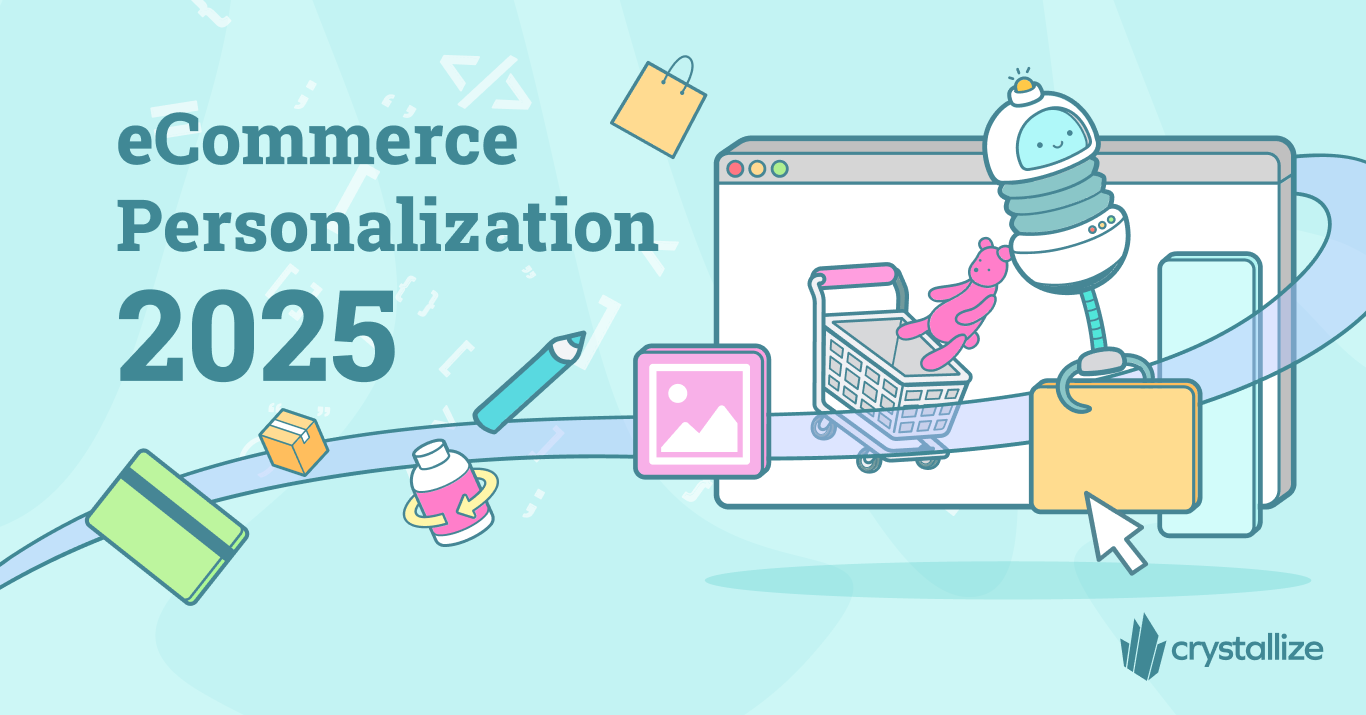
Think about the nicest gift you’ve ever received. It probably wasn’t the expense that impressed you, but the amount of thought that went into it. And it almost certainly didn’t come from a stranger but rather from a person (or people) who knew you well, from your likes and dislikes to your career, hobbies, and aspirations.
Retailers are now trying to tailor their shopping experiences so that you feel like you’re visiting an old and generous friend rather than a cold behemoth that doesn’t know you from Adam. The latest tech makes this feasible, and surveys show that it works.
This is the world of eCommerce personalization. Let’s dive in for a closer look.
What Is eCommerce Personalization?
eCommerce personalization is already happening around you. It encompasses how retailers (and e-commerce businesses in general) customize shopping experiences for each person who visits their website or app.
Have you ever received product recommendations based on your answers to a quiz, your purchase history, or what items you placed in your cart? Have you ever converted hard-earned reward points into a discount or free product?
Then you know just what I mean.
Why Does eCommerce Personalization Matter?
Companies like Spotify, IKEA, Amazon, and many more engage in personalization because it works and has become something most online shoppers expect. A McKinsey report found that 71% of consumers want personalized experiences, and 76% are unhappy when they don’t get them (source). The same report claims that retailers leading in personalization practices made 40% more revenue than those that didn’t.
Aside from increased revenue, businesses are finding additional benefits to personalization, such as:
- Better conversion rates. Personalization helps customers skip past the thousands of irrelevant products and options and allows them to focus on what they want. This helps them feel confident and more likely to buy. On the other hand, a prospective customer who gets no personalized help may feel overwhelmed by the choices available and, as a result, may not buy anything.
- Increased customer loyalty. If customers like what you offer and feel like you care about them, they’ll keep returning.
- A stronger understanding of who their customers are. As I'll explain below, this is the natural consequence of any personalization strategy you may adopt.
Implementing Personalization: A 4-Step Strategy
Data collection. Retailers know their customers better because personalization hinges on one key element: data collection. It is inarguably the first step of any personalization strategy.
The sort of data collected on each customer tends to boil down to these categories:
- Location
- Technical details (IP address, mobile vs. desktop, operating system, etc.)
- Traffic source (e.g., organic, paid or an email link)
- Behaviors (order and browsing history, time spent on webpages, cart history, etc.)
- Demographics (age, income, etc.)
I think one thing most businesses are doing wrong is that they collect mountains of customer data without making it transparent or gaining anyone’s consent first. I argue that data collection should be opt-in, not opt-out, much like what we already have with website cookies. Customers who want a personalized experience (and that’s most of them, remember!) will be happy to say yes, while those who don’t want it don’t feel like you’ve gone behind their backs, which could make them feel creeped out or betrayed.
I certainly don’t want to do business with someone I can’t trust. As it turns out, it’s not just me. An Acquia study found that 65% of respondents would stop using a dishonest brand about how it uses consumer data.
Segmentation. Once data is collected transparently, and you know something about your customers and their buying habits, it’s time to segment your audience. Identify demographics and figure out which customers fall into which categories. You may already know that you cater to a young market, or you might be surprised by who visits your site and buys from you.
In either case, going forward, you’ll want to pay special attention to your biggest demographics. Ensure that your product offerings are top-notch and that your ideas for personalization will fit their tastes. Some demographics may be thrilled with an AI shopping assistant, while others may just want a good old-fashioned discount code for being a repeat buyer.
Implementing Personalization. Now that you’ve done your research and brainstorming, It’s time to put in place the strategies that you know will wow your target demographics. Here are some examples you might consider:
- Personalizing your website and mobile experience. When each user logs on, they get an experience tailored to them: links to repurchase things they’ve bought in the past, recommendations for similar or complementary products, notices of sales or events at stores local to them, and so on.
- Offering AI shopping assistants and/or customer service reps. These are becoming more sophisticated, as we’ll discuss below.
- Offering discount codes, special prices, etc., to customers based on what they’ve bought in the past and what they might buy in the future.
- Enhancing the checkout process. Remembering what they’ve put in their cart, sending reminder emails with discount codes, storing customer payment methods for quick checkout: everything possible to streamline ordering and minimize abandoned carts.
- Sending customized email offers to entice further shopping.
- Create a rewards system to enhance loyalty and offer customized rewards as your customers “level up” to higher status levels. The rewards should be worth it! No one wants to spend $500 to get a free item worth only $10.
Evaluating Performance. Leverage sales data and customer feedback to gauge how well your personalization strategies work. Don’t be afraid to try something different if a certain approach isn’t effective.
🪙Discount Codes and Flexible Pricing in Crystallize
We mentioned promo codes, discount codes, coupons, special pricing, right? From site-wide seasonal sales to exclusive member offers, Crystallize’s flexible pricing capabilities have you covered. 👇
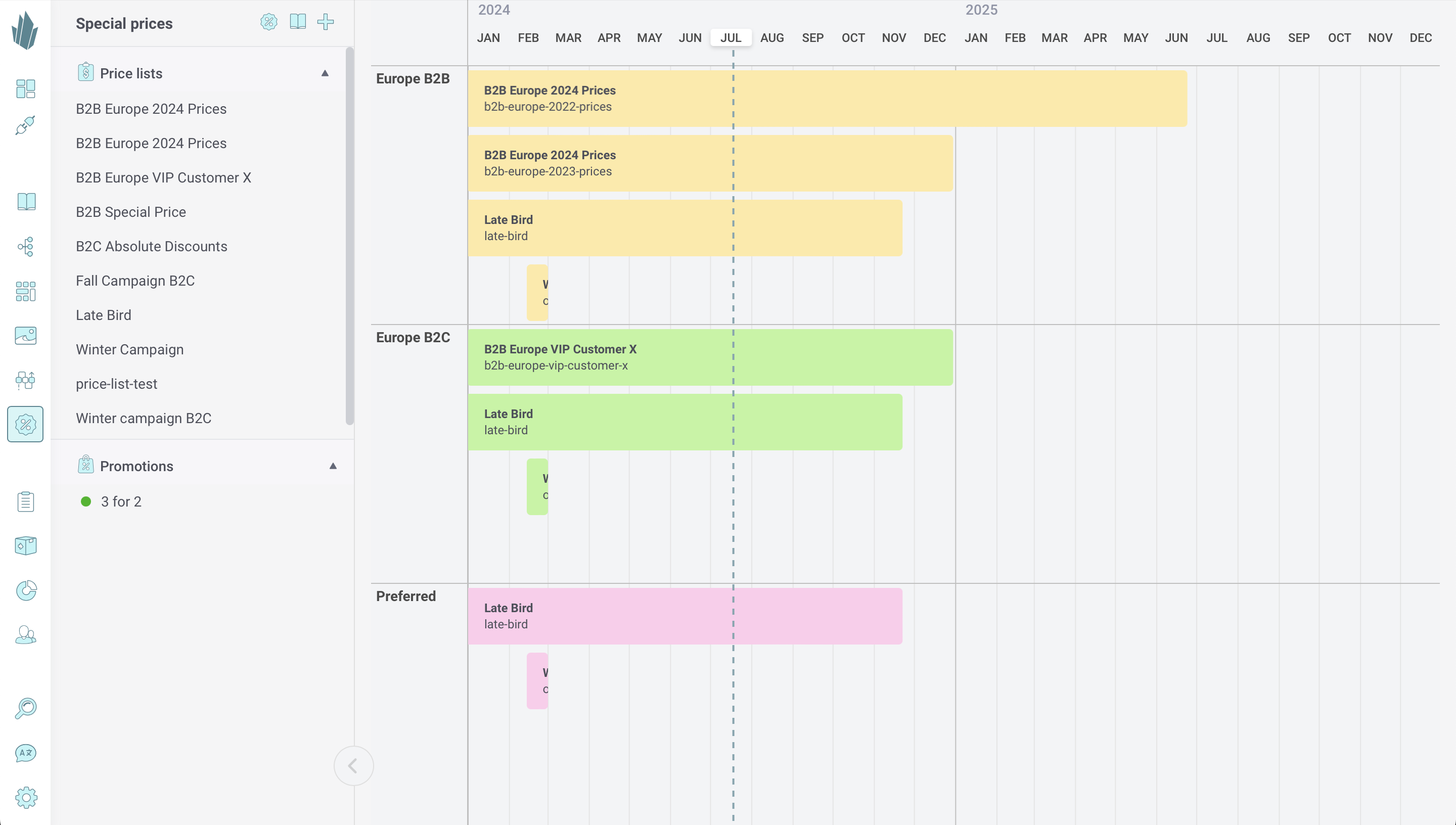
Key Trends Shaping Personalization Strategies Today
One of the biggest drivers of eCommerce personalization is artificial intelligence (AI). The most obvious use is in processing the vast amounts of customer data necessary to facilitate things like customer behavior prediction, dynamic pricing, personalized search results, and timely recommendations to reorder when something is running out.
More and more businesses employ AI chatbots and shopping assistants, automating customer service features that help people resolve their issues and find precisely what they’re looking for. Through 2025 and beyond, you can expect to see AI powering things like 3D configurations, augmented reality (AR), voice-enabled shopping, and try-before-you-buy setups.
How and where to start?
Our 3D Visual Product Configurator Accelerator is a good first step in enabling your customers to view and customize products based on their preferences. The next step is 3D product configurators with AR.
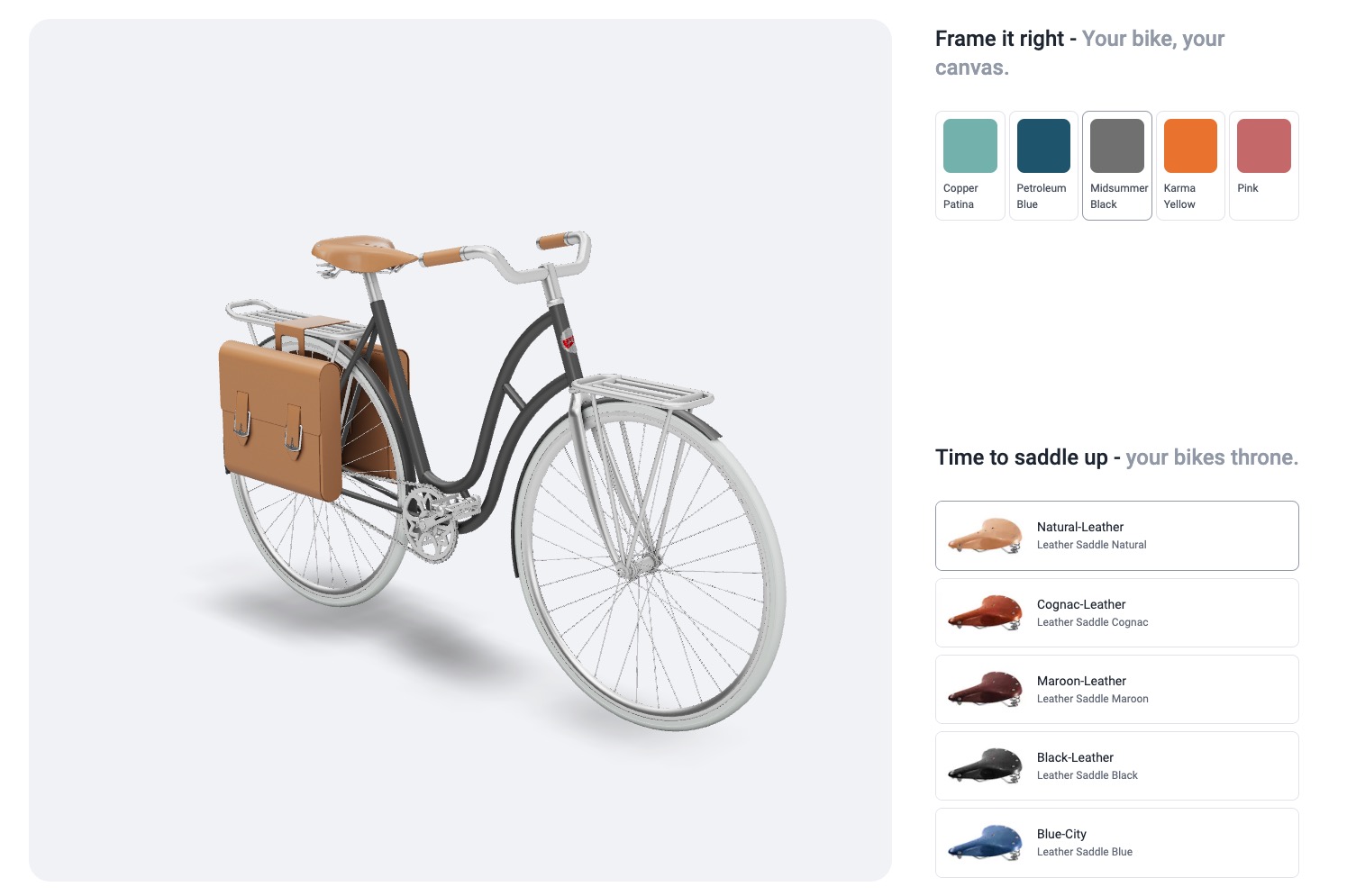
Another trend to look out for in the future is building brand communities. Taking customer loyalty one step further, brand communities encourage fans of the brand to interact with and support one another, leading to even higher customer retention. The research firm Gartner predicts that half of consumers will be pulling back from social media by 2025, and research from community marketing platform Tint indicates that over 70% of consumers wish their favorite brands had communities they could join.
These communities seem to be especially suited for services and product lines that require research on the customer’s behalf to understand how to use the product/service and/or what options are best for them. Imagine taking your questions to a friendly and knowledgeable group of satisfied patrons versus emailing Customer Service and hoping for the best.
(And, if you didn’t know, we have a great community on Slack! Join us!)
E-commerce Personalization Examples
Facebook and Google show targeted ads and content based on your activity and searches. And have you ever been startled by a YouTube recommendation for a video about a topic you were recently thinking about? These are more examples of personalization in action, and we can expect such things to become even more sophisticated.
As far as brand communities go, I'm sure you can already think of plenty of examples on your own, from Slack and Discord communities for IT offerings to “Swifties” to online fitness instructors who offer subscriptions to their content and often have groups full of people who inform and motivate each other.
Personally, as a fan of baseball (Let’s Go Bucs!) I can tell you it’s two entirely different things to follow the game solo vs. sharing it with other fans: rooting for the team together through thrilling highs and devastating lows, discussing the latest team news, and celebrating players like Roberto Clemente, who made a massive impact on and off the field, asking someone to please explain some obscure rule you had no idea existed. It makes you feel like you’re part of a huge family and motivates you to attend games in person and buy merch while you’re there.
One of our latest case studies, Reimagining Sweef.se, showcases brand that invests a lot in personalization (sofa configurator, AI suggestions etc.).
The Future of E-Commerce Personalization
E-commerce personalization is changing big time! We're talking about a content-first, AI-driven revolution where retailers are using cool new tech to give everyone super personalized experiences.
Two game-changing innovations leading the charge are Model Context Protocol (MCP) servers and agentic AI. These technologies are elevating both the customer-facing experience and backend operations, enabling AI-driven segmentation, hyper-relevant content delivery, faster time-to-market, and a shift away from legacy platforms toward headless, composable ecosystems.
Machine learning models analyze myriad data points – browsing behavior, purchase history, real-time context – to create micro-segments or even segments-of-one in real time. This means each shopper can effectively get a unique experience. An AI might recognize, for example, that a user browsing hiking gear on a Saturday morning is likely preparing for an outdoor trip, and instantly adjust what content and products are shown to suit that context.
MCP servers amplify this capability by feeding rich, real-time data into AI models. MCP is an emerging standard that allows an AI assistant to draw on multiple context sources simultaneously (product catalogs, customer profiles, inventory systems, content repositories, etc.). It acts as a bridge connecting an AI model to the entire ecosystem of an e-commerce business. The result is smarter segmentation and truly context-aware personalization.
Wonder how will Model Context Protocol (MCP) revolutionize PIM integration? Check this out with use cases for MCP in Crystallize.
On the front end, agentic AI is redefining the shopping experience by acting autonomously on behalf of customers. Agentic AI refers to AI systems (often powered by advanced generative models) that can take actions with minimal human input to fulfill a user’s intent. Instead of just offering recommendations, an agentic AI can execute tasks.
A prime example is Amazon’s new Buy for Me feature, which signals the rise of autonomous shopping assistants. With Buy for Me, a customer can indicate what product they want from an external brand site, and Amazon’s AI agent will find the item, fill in the details, and complete the purchase on the user’s behalf – all within the Amazon app. It’s a direct implementation of agentic commerce: the user sets an intent (“buy this product”), and the AI carries it out across multiple systems and steps.
Retailers and platforms that embrace agentic AI early are positioning themselves as ultra-convenient and customer-centric, potentially earning greater loyalty. The strategic value here is not just novelty; it’s about reducing friction in the customer journey. Eliminating the need for customers to navigate multiple sites or forms – their AI handles it. The brand that provides this frictionless, proactive service will stand out in a crowded market.
It’s not only the customer-facing side that’s being revolutionized – backend operations are also being supercharged by AI autonomy. Agentic AI in the backend means AI agents that can make decisions and take actions in areas traditionally managed by human teams, dramatically accelerating speed-to-market and optimizing continuously.
One major use case is content creation and optimization through agentic workflows. In a modern marketing team, rather than waiting on a designer or copywriter for every iteration, an AI agent can autonomously generate assets like landing pages, product page copy variations, or personalized email campaigns. It does so by pulling in the latest data (via MCP, for example): product performance stats, conversion data, customer reviews, etc., to inform the content. Plantasjen has done something similar.
We are at the dawn of a content-first, AI-driven revolution – and companies that lead in this revolution stand to redefine customer experience, much to their advantage.
Get Personal
Nowadays, one can argue that eCommerce personalization is no longer optional. What matters is how you do it. Your customers should be able to easily opt in or out at a level where they feel comfortable.
If you do it right, you’ll have delighted customers who feel seen and cared about. They'll buy again and rave about you on their social networks.
No matter how technologically advanced we become, personal recommendations from trusted sources will always beat every other form of advertising.
We can help. CLICK HERE and set up a personal 1-on-1 Crystallize demo. Let’s discuss your use case and take it from there.
Alternatively, why not SIGN UP for FREE, try Crystallize, and get our team's unparalleled support to help you get going.
Follow the Rabbit🐰
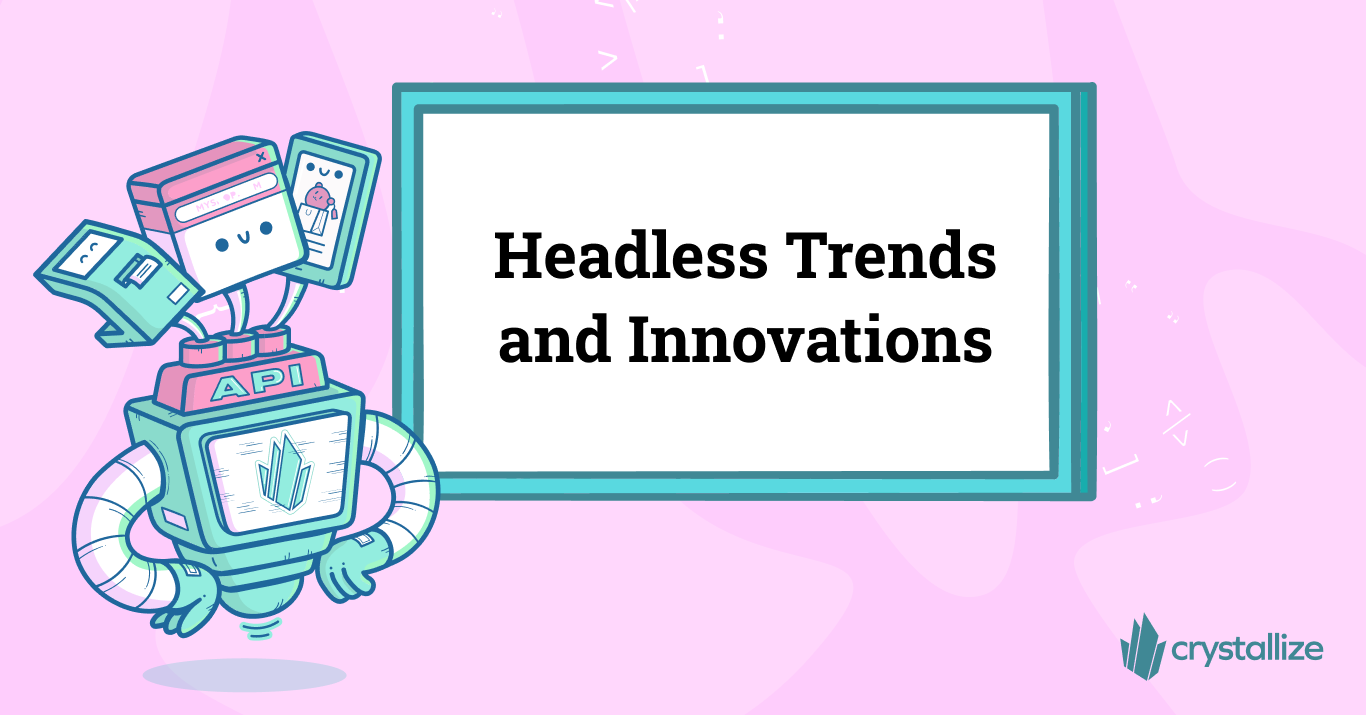
The Future of Headless Commerce: Trends and Innovations
A short overview of what is (probably) coming in the world of headless commerce.
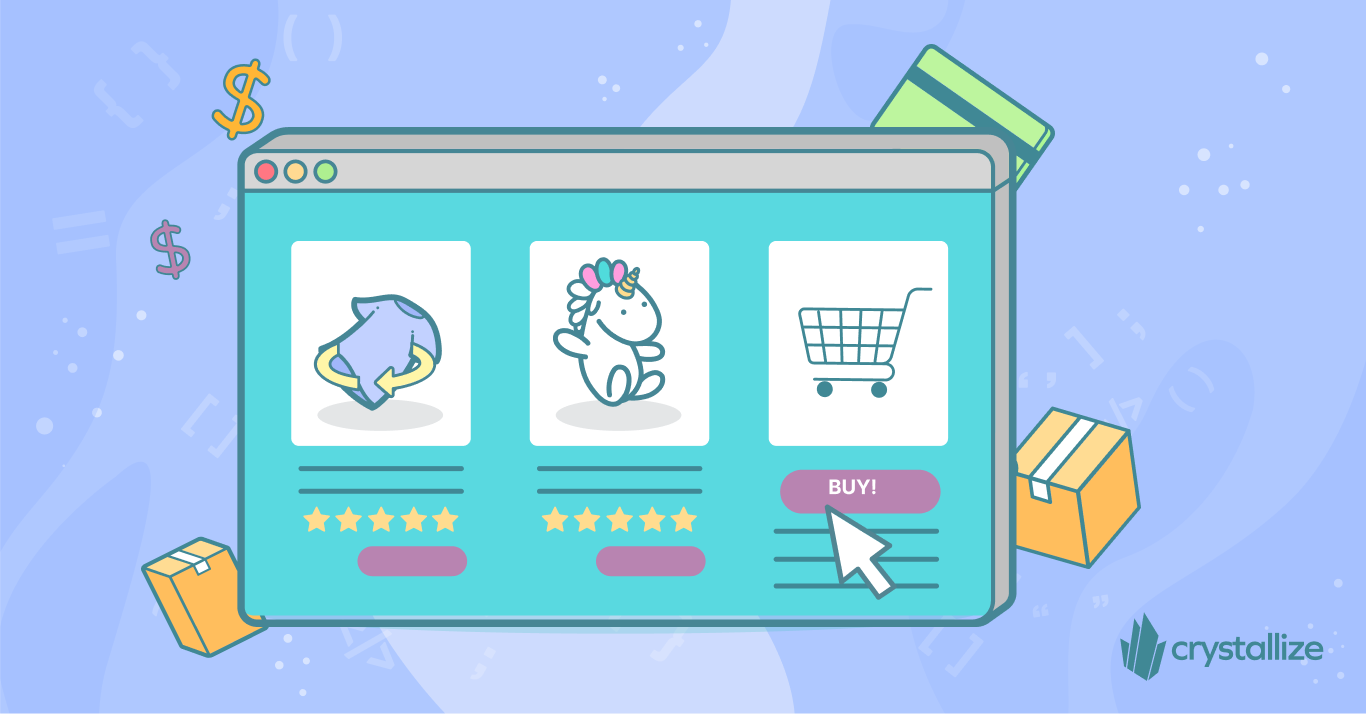
Seamless Subscription Management for eCommerce Businesses
Why is subscription management a game-changer for eCommerce businesses, and how can you harness its power to maximize recurring revenue?

